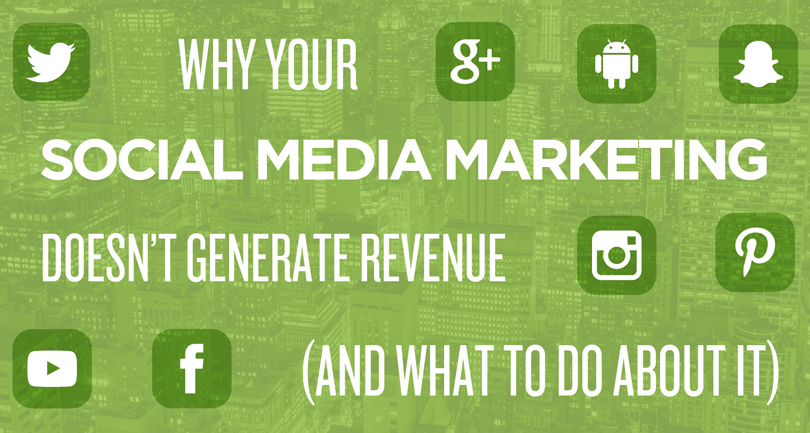
Guest post by Marleen Anderson
Let’s get one thing clear – in 2008, 93% of American customers expected businesses to be present on social media. Today the vast majority of companies have social channels, but the widespread branded use of social media doesn’t mean marketers know what they’re doing.
If your social media marketing strategy isn’t generating any revenue and you only grow frustrated at the thought of investing resources into your social channels, this post is for you. Here are 6 possible reasons why your strategy isn’t working and tips to help you fix these issues.
1. You don’t have a clear strategy

This is a serious mistake. Without a clear strategy, you’ll have no idea about what you want to achieve from your efforts. How else can you know that your strategy is working than by comparing its outcomes to objectives set at the beginning?
Develop a plan with specific and measurable goals – both short- and long-term. That’s the best way to ensure that you’re headed in the right direction with your social channels.
2. You don’t care about what your audience wants
It’s not like you can post content and expect your audience to engage with it. Sure, they’re following you, but it doesn’t mean that they’ll like everything you post. Especially if you’ve got absolutely no idea about what they want. Many marketers develop a vision of branded content without ever testing their assumptions on their target.
Eventually, they end up with heaps of useless content that reflects only what they want to talk about. Meet your audience halfway. Discuss things that are important to them, help solve their problems and make them laugh. They’ll like you for it.
3. You don’t create enough content

Inbound marketing takes time. Unfortunately, some marketers fail to create enough content to keep it going. The content you share on social media matters a lot – if you constantly refer to blog posts and videos created by other brands, how can you expect to generate revenue from your social channels?
You need original quality content to get results from social media. Invest in creating new content and then recycle it into new forms like bite-sized videos or Slideshare presentations. It won’t cost you a fortune, but you’ll keep giving your audience fresh ideas on a regular basis, keeping them engaged in your brand.
4. You’ve got no marketing budget
This is a huge mistake. And it still keeps happening! Companies spend lots of money on developing their products and consequently have very little resources left to market it.
Social media might be available for free, but to make the most from them, you need to invest in advertising and content creation. Show your audience the value of what you’re offering and convince them that you’re an expert in your niche. You need this type of visibility to survive in any market.
5. You believe social media will do the job on its own

It won’t. Posting doesn’t bring results unless you really become part of the online conversation by interacting with your audience in a meaningful way. This, plus solid email marketing strategy, regular content creation and PR are all key ingredients you need to make it on social media. Don’t count on miracles – you need to be the one driving the engagement, not Facebook or Twitter.
6. You’re too promotional for your own good
If you treat our social channels as nothing more than personal billboards, don’t count on them to drive engagement with your brand. Posting about your product, service, company and brand is alright, but to a point. Poorly planned promotional posts can ruin your reputation and result in unfollows.
Focus instead on building a community of loyal customers around your brand – they’ll act as brand evangelists in recommending your product to others and keep on buying from you time and time again.
Success in social media marketing comes to those who are patient, focus on the user and are able to accurately monitor the reactions of their target audience to every single post and share. When planning your social media strategy, remember that your social channels are just part of a larger whole where each element works toward boosting one brand image.
Strategic planning should include everything from SEO and email marketing to advertising, content marketing and social media. If your social media tactics don’t fit that larger picture, don’t expect them to generate any revenue.

Marleen Anderson is a tech-savvy blogger who enjoys writing about technology and its impact on how businesses grow and promote themselves. Marleen is also engaged with Saxons – IT support specialists from Australia.





